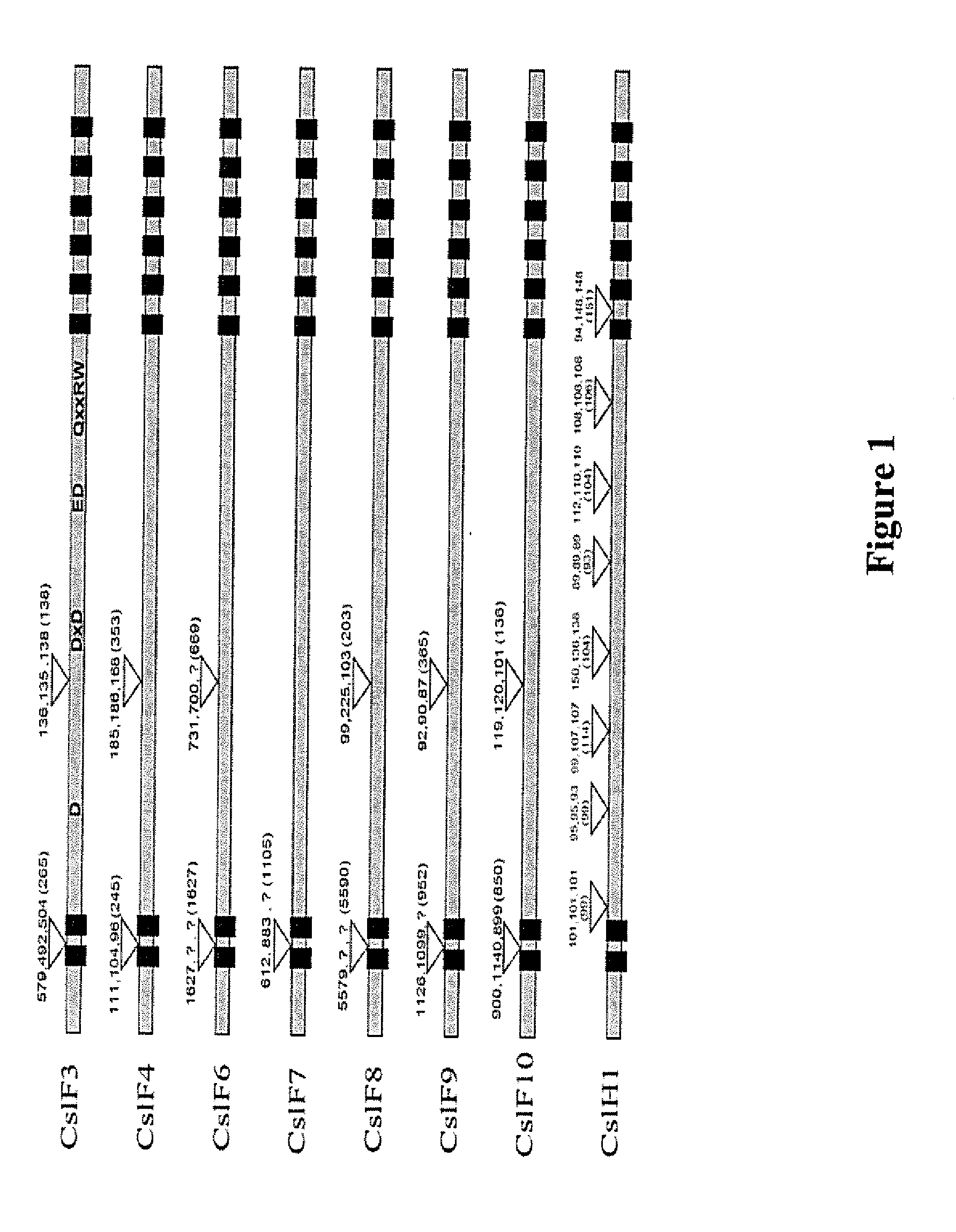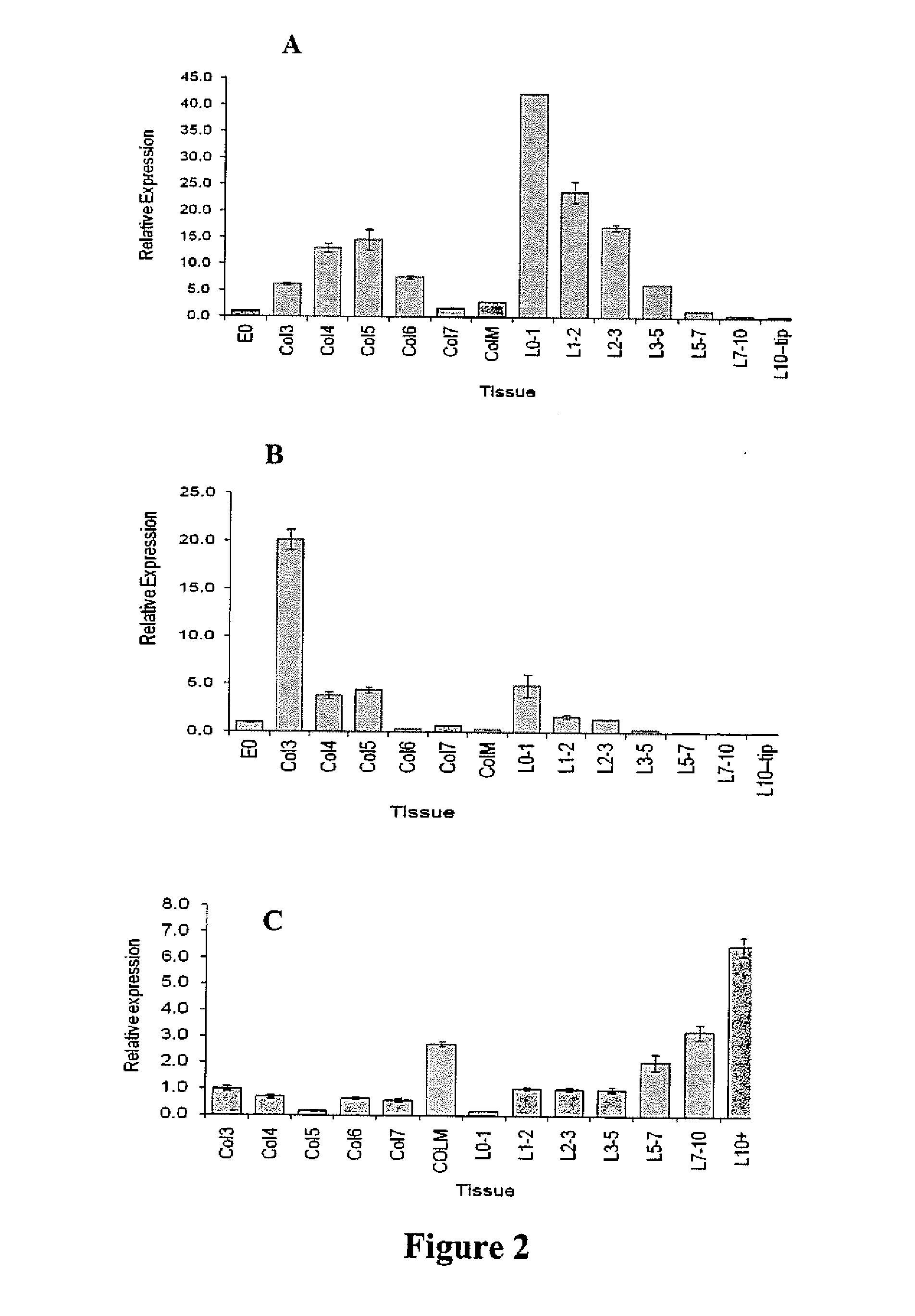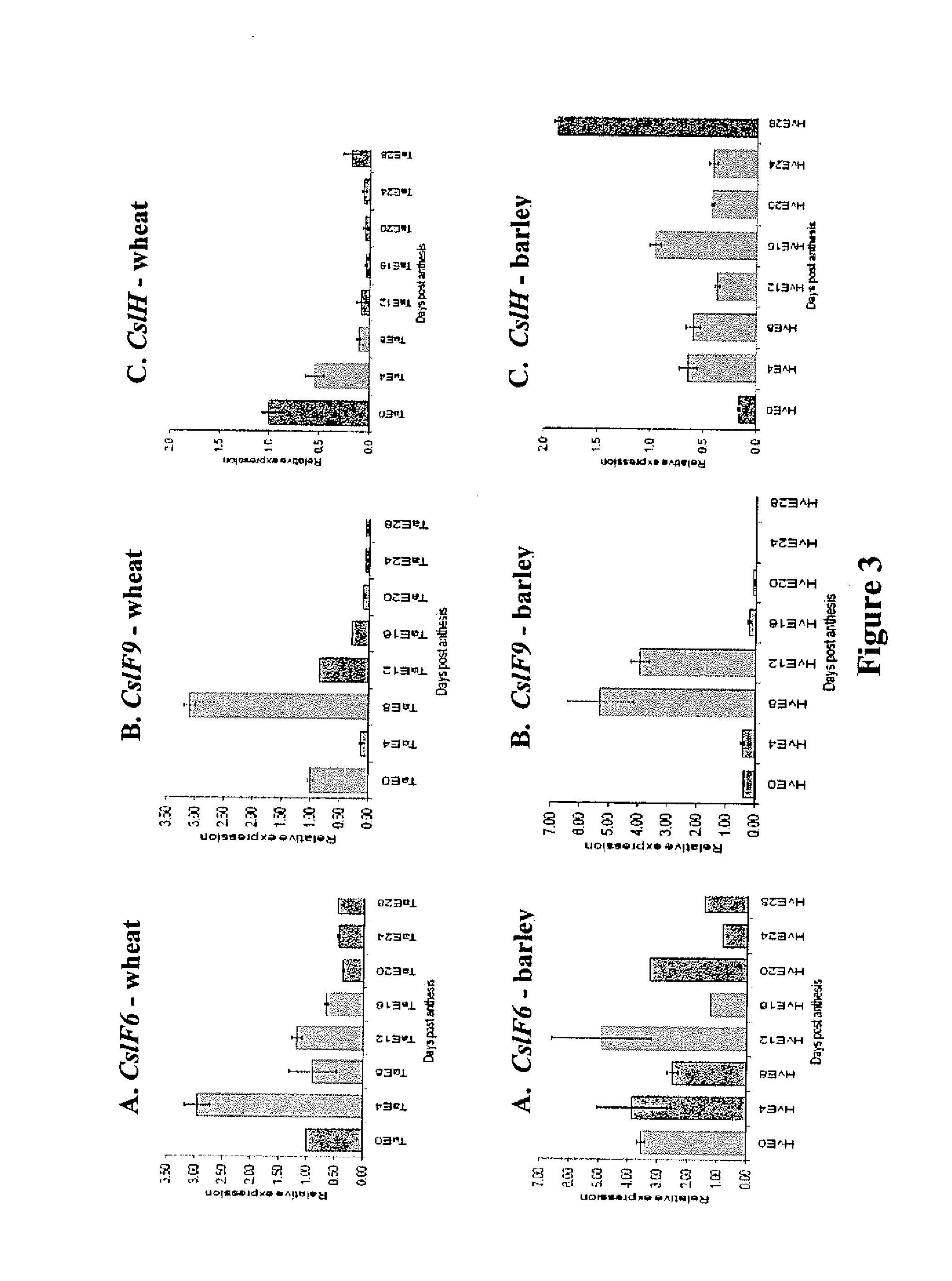Wheat having high levels of beta-glucan
a technology of beta-glucan and wheat, which is applied in the field of transformed wheat with high levels of beta-glucan, can solve the problems that the properties of cell wall polysaccharides in one cereal cannot be readily generalized to other cereals, and it is unknown which gene or combination of genes might provide sufficient, so as to prevent or reduce the severity or incidence of disease, and reduce the incidence or severity of diabetes
- Summary
- Abstract
- Description
- Claims
- Application Information
AI Technical Summary
Benefits of technology
Problems solved by technology
Method used
Image
Examples
example 1
Materials and Methods
Plant Material and Growth Conditions
[0208]Plants of barley (Hordeum vulgare) cultivar Himalaya and wheat (Triticum aestivum sp. aestivum) cultivar Bob White26, including both untransformed (wild-type) and transgenic derivatives, or cultivar Westonia were grown in 15 cm pots under standard glasshouse conditions with natural daylight and a temperature regime of 25° C. maximum during the day and 15° C. minimum at night. To provide barley leaf tissue for gene expression studies, grain was germinated in the lab in vermiculite and the first leaf was harvested after 7 days. The corresponding wheat leaves were harvested from plants after 9 days. For the grain development gene expression studies, heads of greenhouse grown plants were tagged at anthesis and grain was harvested every 4 days post anthesis (DPA). The whole caryopsis was used at 0 and 4 days post anthesis and the embryo and pericarp were removed from all other samples except the 28 day sample from which the p...
example 2
Cloning of Wheat CslF and CslH Genes
[0219]Introduction.
[0220]The (1,3;1,4)-β-D-glucan (herein BG) content of cereal grains varies amongst the cereal species with barley, oats and rye having the highest amounts and wheat, maize and rice have relatively low levels (Fincher and Stone, 2004). For example, wild-type barley normally has about 4% BG with some barley lines having considerably more BG, whereas wheat grain typically has less than 1% BG, normally about 0.5-0.8%, on a dry weight basis. In barley, BG forms the main component of cell walls in both developing endosperm and mature endosperm (Izydorczyk and Dexter, 2008). In contrast, BG is the main cell-wall component of wheat endosperm only at early grain development stages whereas arabinoxylans accumulate at the beginning of cell differentiation and by grain maturity form 70-80% of the endosperm cell-walls (Philippe et al., 2006a, 2006b).
[0221]The CslF6 gene in barley was shown to encode an active BG synthase (Burton et al., 2008...
example 3
Analysis of Expression of CslF and CslH Genes in Wheat
[0232]For analysis of endogenous gene expression, semi-quantitative RT-PCR was performed with HotStar Taq (Qiagen) DNA polymerase. In order to not saturate the amplifications, the number of cycles in each PCR reaction was adjusted in the range of 28-35 for Csl and CesA genes, and 24 cycles for the α-tubulin gene used as a control for quantitation of RNA loading. Real time PCR, which was more quantitative, was performed on a Rotorgene6000 (Qiagen) with Platinum Taq and SyBR green. The machine software was used to calculate expression differences based on comparative quantitation. Nucleotide sequences of the primers used are given in Table 1.
Expression Analysis of CslF and CslH Genes in Wheat—Coleoptile and Leaf Tissue
[0233]Based on the semi-quantitative RT-PCR results, the expression of the more highly-expressed wheat CslF genes, namely TaCslF6 and TaCslF9, and the TaCslH gene was examined using Real-time PCR. Data are shown in FI...
PUM
| Property | Measurement | Unit |
|---|---|---|
| Temperature | aaaaa | aaaaa |
| Temperature | aaaaa | aaaaa |
| Weight | aaaaa | aaaaa |
Abstract
Description
Claims
Application Information
 Login to View More
Login to View More - R&D
- Intellectual Property
- Life Sciences
- Materials
- Tech Scout
- Unparalleled Data Quality
- Higher Quality Content
- 60% Fewer Hallucinations
Browse by: Latest US Patents, China's latest patents, Technical Efficacy Thesaurus, Application Domain, Technology Topic, Popular Technical Reports.
© 2025 PatSnap. All rights reserved.Legal|Privacy policy|Modern Slavery Act Transparency Statement|Sitemap|About US| Contact US: help@patsnap.com



